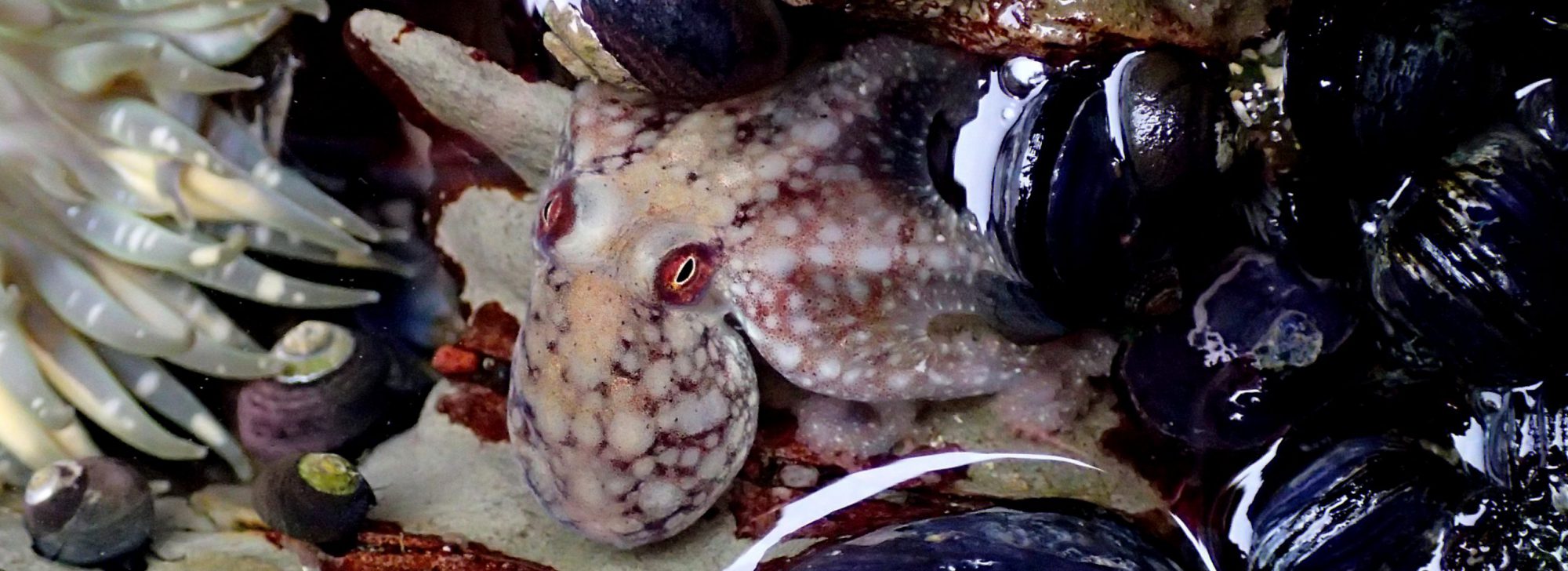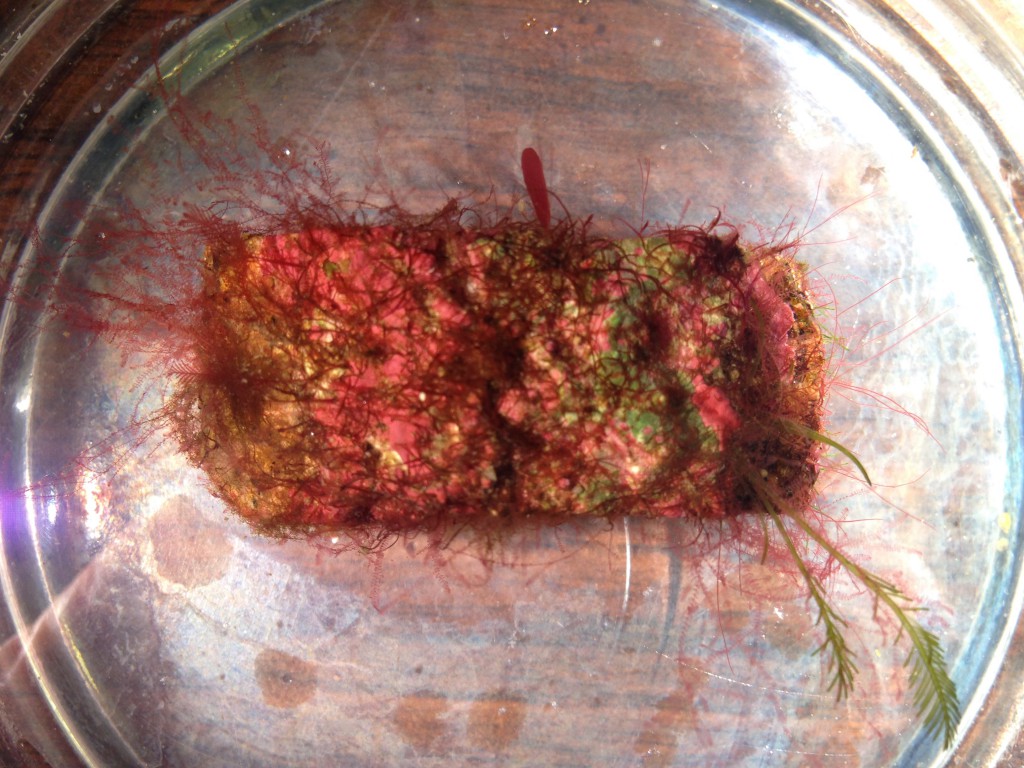Today I decided to look at some scuzz growing in one of the seawater tables at the marine lab. This table is populated mostly by coralline rocks, although I have some pet chitons running around in it.
I picked out a promising rock and examined it under some decent light. Most of the rocks have at least some fuzzy red filamentous algae growing on them; this one also had a bit of a filamentous green, which made it a promising subject for photography. I already knew what the green was (Bryopsis corticulans) but didn’t recognize the filamentous red. The Bryopsis is in the lower right corner of the rock in the photo below:
What was noticeable about the Bryopsis and the mystery red is the difference in size. Bryopsis looks positively dainty until you compare it with the red. Wanting to take a closer look at the red, I plucked off a bit and mounted it on a microscope slide. This is really the only way to see what’s going on with these filamentous algae, and it works like a charm. You don’t have to make a cross-section or anything; you just put the piece in a drop of water, add a cover slip, and look at what you can get:
What first caught my eye was the rather simple branching pattern. The central axis is made up of roughly rectangular cells, each of which has two side branches that are opposite each other. Each of the side branches has branchlets on only the upper surface. Branching like this is relatively easy to draw (things spiralling around in three dimensions are really difficult for me), although my drawing isn’t nearly as pretty as the real thing.
This microscope view, along with my little sketches, provided me with enough information to key out this alga even though it didn’t have any reproductive structures. According to the dichotomous keys in Marine Algae of California* (the book that marine biologists refer to as the MAC, our Bible for identifying the algae) it is Antithamnion defectum. The MAC says that this species is common on other algae and can be found both intertidally and subtidally from southern British Columbia to Baja California. It could very well be that I see this species in the field, but these filamentous reds look pretty much the same, at least to my inexpert eye. It really does take a microscope to figure out what I’m looking at.
*Abbott, Isabella A. and George J. Hollenberg. Marine Algae of California. Stanford: Stanford University Press, 1976. Print.



